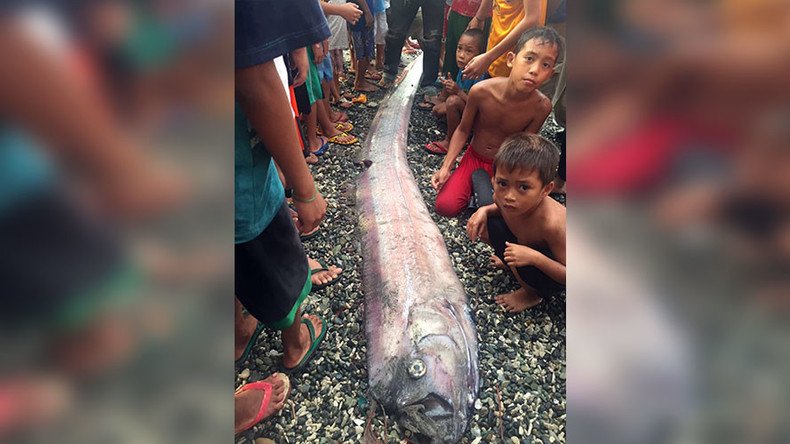Mysterious oarfish sightings stoke earthquake fears in the Philippines (PHOTOS)

Three oarfish, which normally live deep near the ocean floor, have been found in the Philippines, sparking fears among locals that it may be a sign of an impending large earthquake.
Oarfish, which can grow to over 56 feet (17 meters) in length, are usually found at depths of between 200 to 1,000 meters, but since February 8, three have been found off the northern coast of Mindanao island, in the south of the archipelago
The latest leviathan was found on Saturday on a beach in the city of Cagayan de Oro, measuring around 15 feet long, though it later died, according to ABS.
Within the last month, one oarfish washed ashore in the nearby province of Agusan del Norte in Mindanao island.
Fisherman caught the first of the trio in February, just two days before a 6.7 magnitude earthquake struck the island.
The frequent sightings of the deep dwelling oarfish have spooked some locals, fearful that it could be a predictor of earthquakes, with some people taking to social media to share their worries.
In Japan, the fish, which can weigh up to 600 pounds (270 kilograms), is known as the “Messenger from the Sea God's Palace,” while Kiyoshi Wadatsumi, a specialist in ecological seismology, told the Japan Times in 2010 that “deep-sea fish living near the sea bottom are more sensitive to the movements of active faults than those near the surface of the sea.”
too many oarfish found, damn, maybe godzilla is coming
— Succubus (@shenadal) February 18, 2017
Rare Huge Oarfish Captured In Mindanao, General Santos City, And People Believe https://t.co/e8EUjsD8NZ
— Neely Pucket (@NeelyPucket1) February 13, 2017












